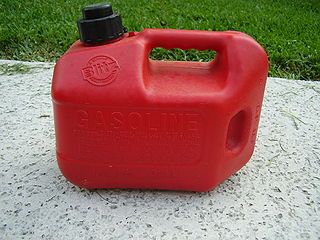From Guest Blogger "Wise Energy" – How Eco-Friendly Tires are Saving Gas
You’ve decided your next car purchase will be one of those hybrid vehicles everyone’s been talking about for its eco-friendliness and fuel efficiency. But right now, you just can’t afford one. In the meantime, is there anything you can buy for your current car that can immediately help the environment and save on gas? Yes! By purchasing eco-friendly tires.
Green Tires For All
Once only an option limited to hybrid vehicles, green tires (not literally green) can be purchased at many tire retailers and in many sizes for most vehicles. Eco-friendly tires help your car improve on gas mileage while at the same time reducing rolling resistance. Although you might have reservations about the first generation of green tires, recent manufacturers have proven they’re able to produce a high-quality, environmentally sound product. And the best part? Eco-friendly tires typically run the same price as a standard tire, which means if you’re shopping specifically for discount tires, you’re in luck.
How Do I Get Them?
Who makes these green tires? Several tire manufacturers have developed environmentally conscious technologies that make their tires lighter and easier on the planet. Green-line tires as well as environmentally friendly manufacturing processes are significantly alleviating the impact cars and their tires are placing on our planet. For example, Michelin Tires has a line of Green X tires, which feature low rolling resistance, improved fuel efficiency and decreased pollution.
Bridgestone Green Ecopia tires are also known to reduce rolling resistance and increase fuel efficiency. Yokohama, a company that carries green tires, uses innovations in manufacturing practices, product design and product performance to work toward creating their green lines such as using orange oil in place of some petroleum-based products in their tires.
Hankook Green Tires utilizes Kontrol Technology, which creates durable tires that are designed to last much longer than regular tires. Goodyear’s Assurance Fuel Max green tires are specially designed to save drivers thousands of gallons of fuel during normal driving life. And the Scorpion Verda Green Tires by Pirelli are high mileage, low environmental impact tires that are carefully designed to decrease gasoline use as well as carbon dioxide emissions.
More Benefits
Along with having better rolling resistance and gas mileage, eco-friendly tires reportedly drive exceptionally well in wet conditions, and have been ranked highly by a series of test drivers. Some of the newer models of eco-friendly tires are also being made with raw materials such as non-aromatic oils in place of petroleum. Some are even being designed to last longer as a way to reduce over consumption of tire materials.
Green Options
If you’re still uncertain about buying the new tires but want the eco-friendly and gas-friendly features, that’s OK. There are a number of things you can get started doing right away. First, check the air pressure on your tires. Improper air pressure leads to the higher rolling resistance, which translates to your engine having to work hard and thus more fuel being burned. Second, take the highway. Cars are far more fuel efficient on the highway. In that same light, avoid traffic jams, and other types of stop-and-go traffic that can drive fuel efficiency down. Third, avoid idling your car when you’re not using it to save on that fuel you’re unnecessarily burning. And finally, the age-old carpool with a coworker or friend to a shared destination is always a valid option.


I’ve long assumed that low rolling resistance tires would sacrifice something in terms of traction, so it’s good to know that some of them handle wet conditions well. What about snow and ice?
Low rolling resistance tyres generally have higher concentrations of silicon rubber in the rubber mix resulting in tyres that remain more flexible at low temperatures helping to retain grip on snow and ice.
The EU recently brought in tyre labelling regulations requiring all new tyres to be rated for fuel economy, wet breaking performance, and noise. Below is a link to information about the new labelling regulations.
http://www.michelin.co.uk/tyres/learn-share/buying-guide/future-tyre-labelling?xtor=SEC-3030-GOO-%5Bgrading_(nbo)%5D–S-%5Beu%20tyre%20labelling%5D&gclid=CNHo5fa4yrQCFSTLtAodH0sAlA
Is the USA doing anything similar?